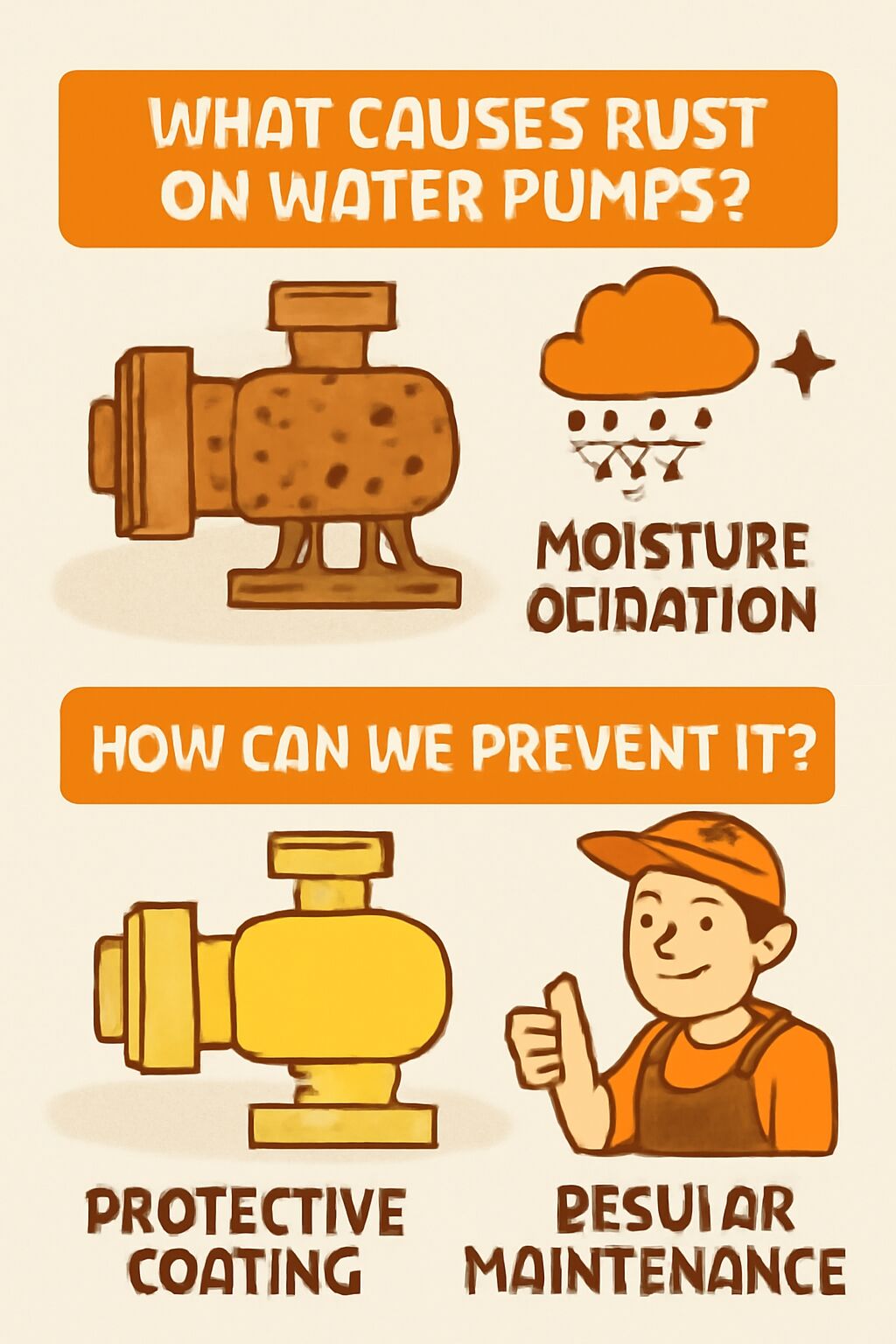Do you know what a pump is? A pump is a special machine that moves water or another liquid from one place to another. They are actually super helpful in many aspects! For instance, they assist in the water that reaches our homes, maintain the water levels in swimming pools and even aid factories. But every now and again, pumps can rust. Rust is the reddish-brown coating that forms on metal when it has been damaged. Rust on a pump is usually a bad thing. One common thing with pipes is rust, and that can be a huge issue which can cause damage to the pump and stop it from working altogether! Which is why we need to understand pump rust, and how to maintain our pumps in order to minimize it.
What Causes Pump Rust?
A few things are capable of making a pump rust. One main cause is water. If a pump stays wet — in particular if it stays wet for an extended period of time — it can begin to rust. This is because the water has minerals and chemicals in it that can damage the pump's metal. When exposed to water for an extended period, metal can react to these minerals and begin to deteriorate. The second commonly reason for a pump to rust is due to air. Even the oxygen present in the air can react with the metal and facilitate rust formation. Which is why it’s extremely important to keep our pumps dry and away from both water and air as much as possible.
How to Keep Your Pump Safe from Rust How can you keep your pump safe from rust? Overall, there are several easy things you can do to keep your pump safe: First, keep the pump dry. If the pump feels wet, be sure to dry it as soon as possible with a towel or cloth. Lubricating the pump may also be recommended with Waterproof or other waterproof coatings. A coating acts as a barrier that keeps moisture from coming into contact with the metal. The line between the air and the pump must also be separated in any way. For example, you could store your pump in a secure location. The purpose of this is to prevent the pump from coming into touch with oxygen, which will rust it. Second, manufacturers of pumps utilize a product known as a rust inhibitor, as previously mentioned. Inhibitors may be sprayed or painted over a surface to protect it from aqua. Tips for Taking Care of Your Pump Taking care of your pump is very draggy.
The following are some suggestions: Clean the pump frequently: Always clean the pump thoroughly. This means removing all the dirt or garbage that has acquired on the pump. Cleaning the housing helps prevent blockages and ensures that the pump operates effectively. Replace the damaged pieces: as soon as you find any broken or malfunctioning components, replace them. This will ensure that the pump is properly constructed, and no other problems develop. Lubrication of pumps means that pumps need automotive or other oil-like materials. Lubrication guarantees that the pump runs smoothly and that rust does not occur.
Use appropriate tools: Always use appropriate tools when doing any work on the pump. Use the wrong tools and you risk damaging your pump and rusting. Ensuring you have proper equipment for the task at hand.
Ongoing Pump Development and Maintenance Considerations
The technology only continues to improve and that includes new methods of designing and maintaining pumps. One frontier is special coatings that can keep pumps from rusting and suffering other damage. The pump also features these high-tech coatings to keep water and air away from the metal parts of the pump. The pump components could be 3D printed for specific pumps at low cost. That is, when a part breaks, it can be printed with relative speed (compared to the long lead times on manufactured parts) and ease, simplifying and speeding up pump repair and care.

 EN
EN










































 ONLINE
ONLINE